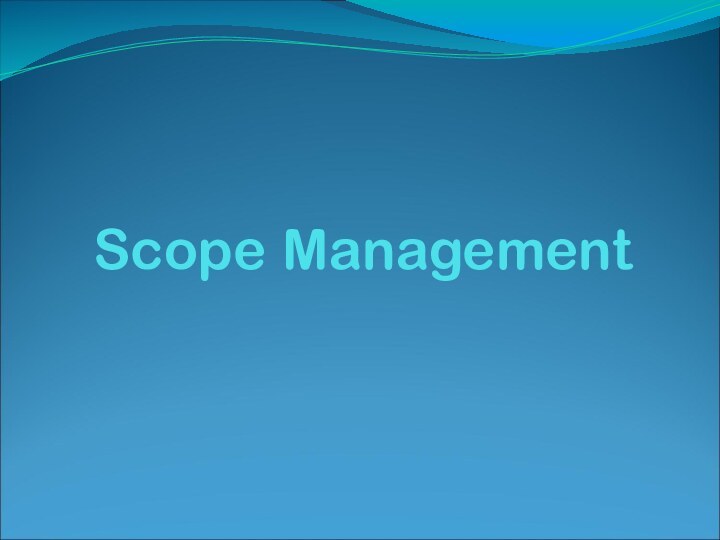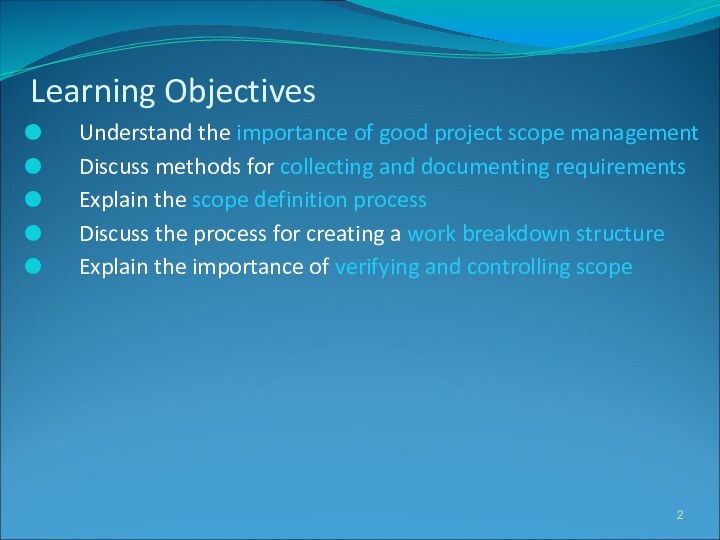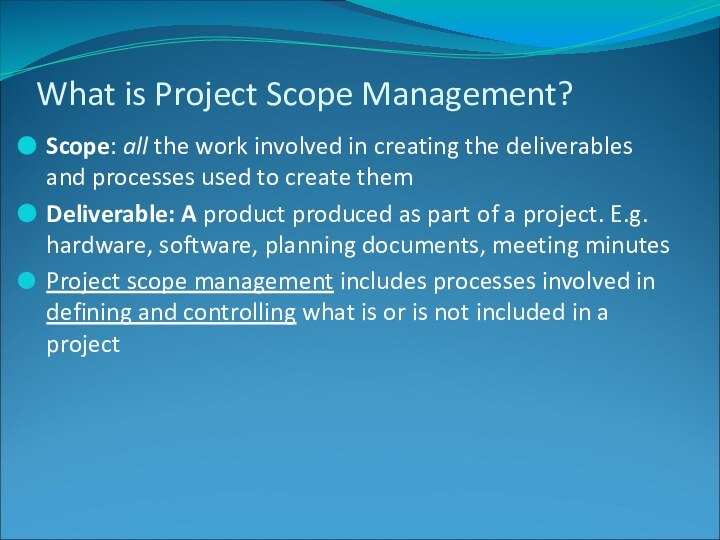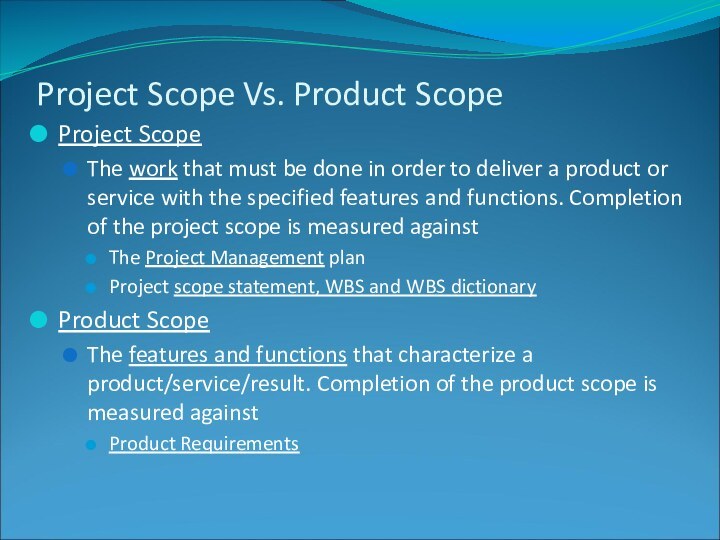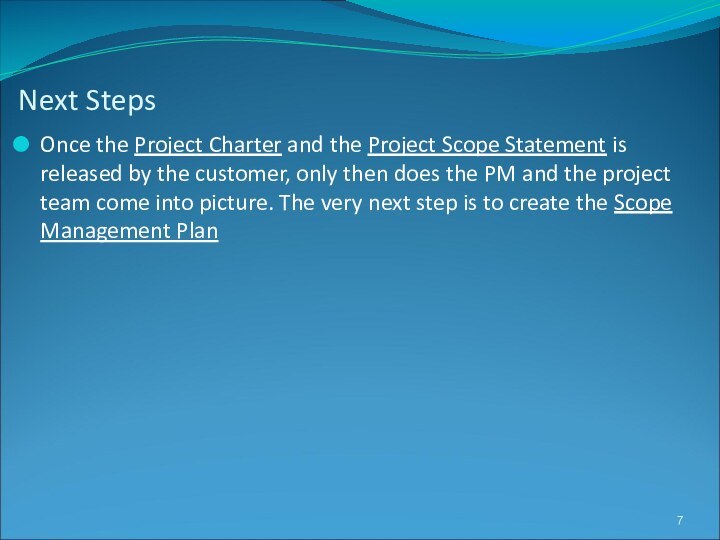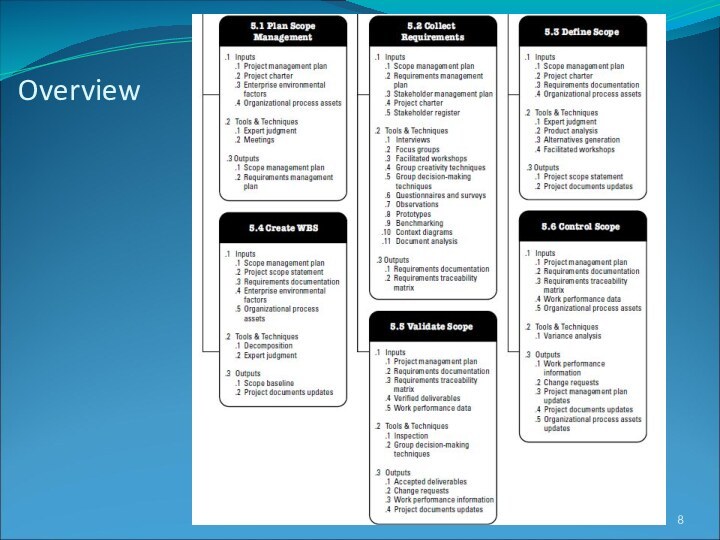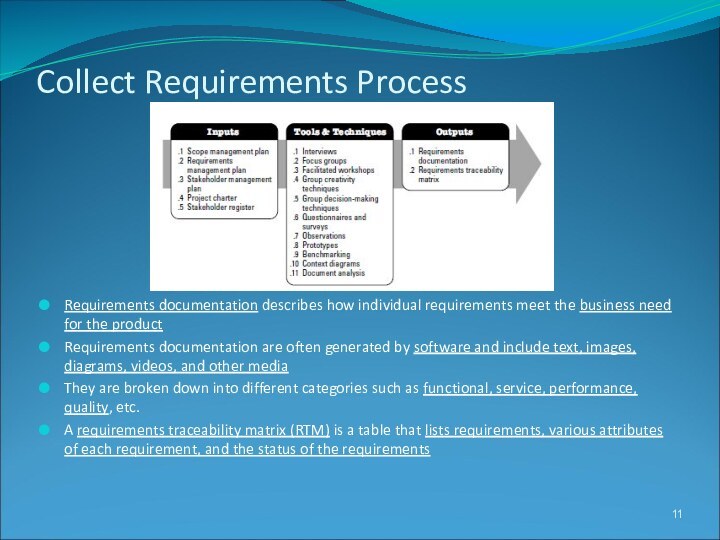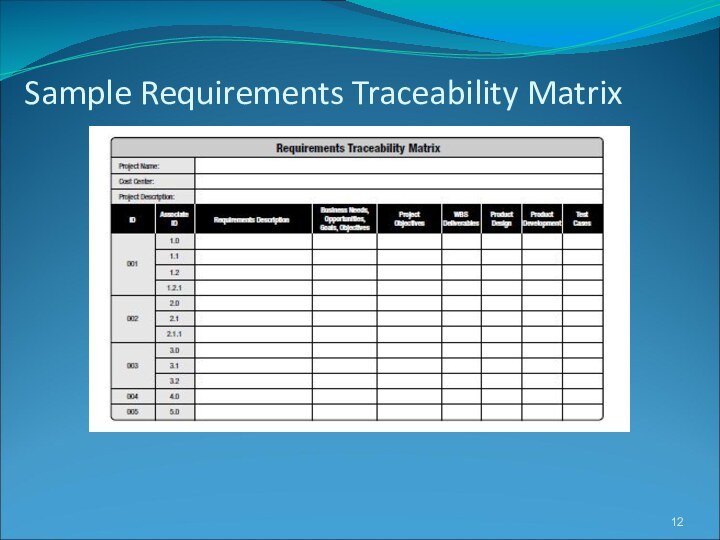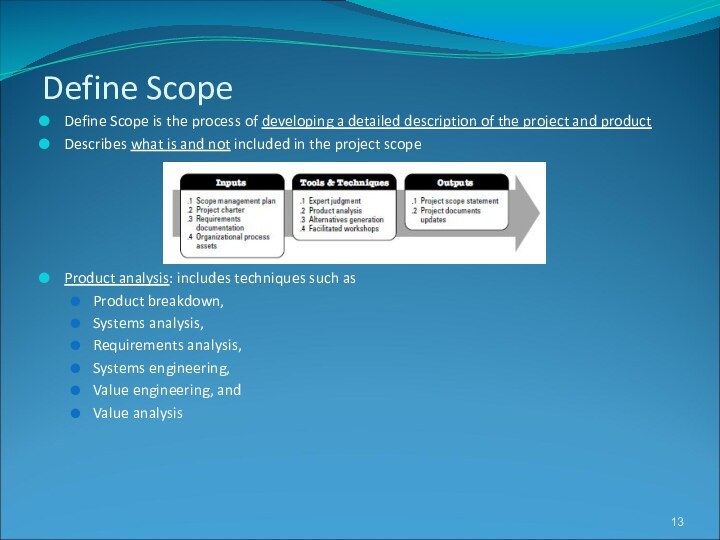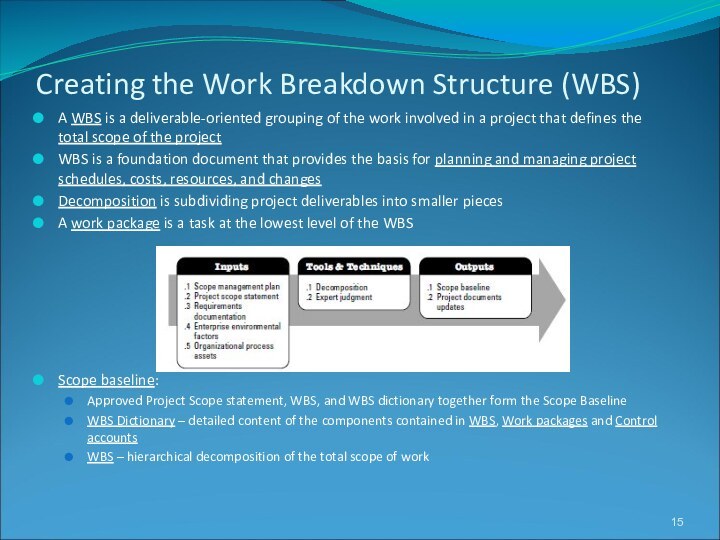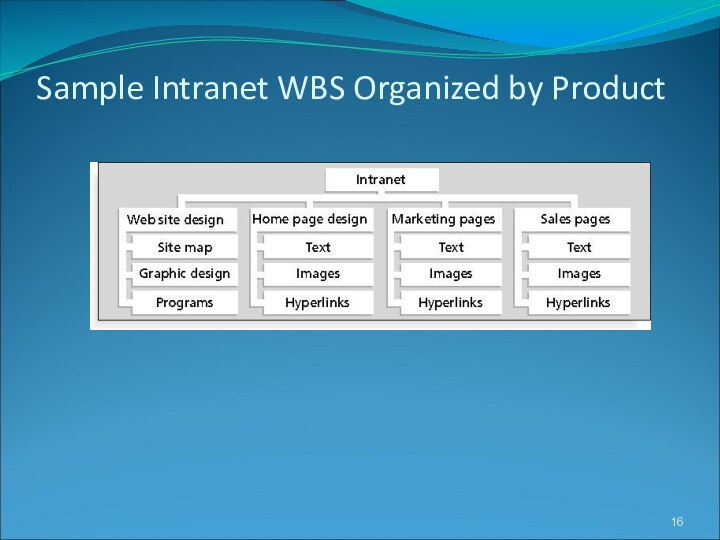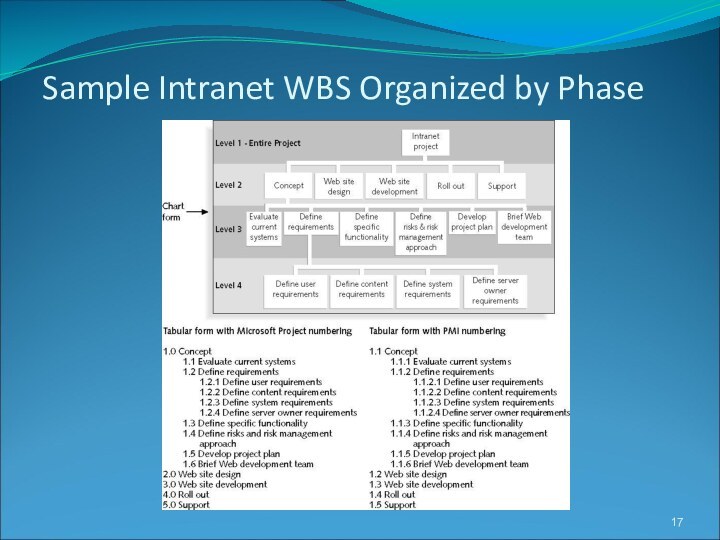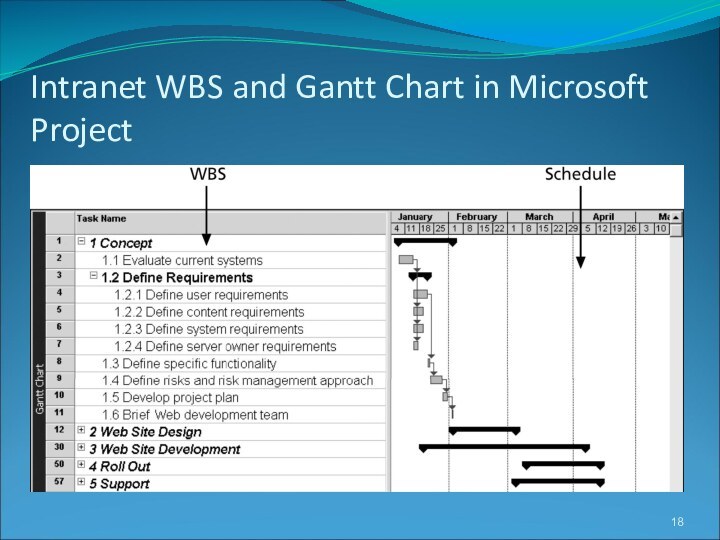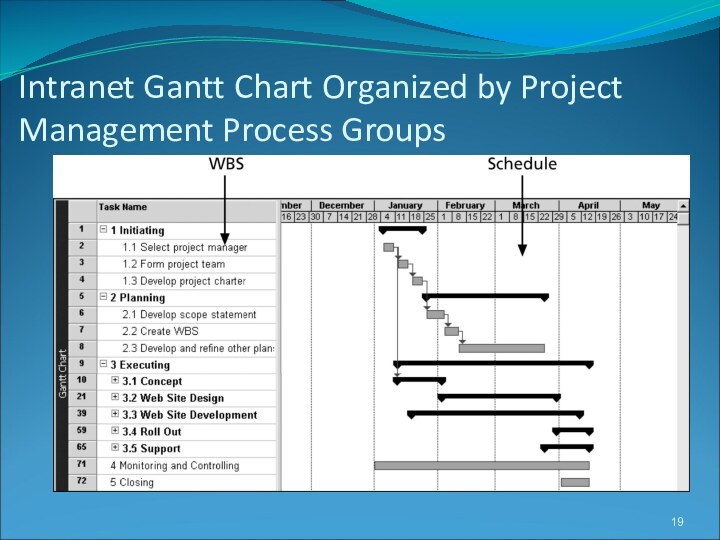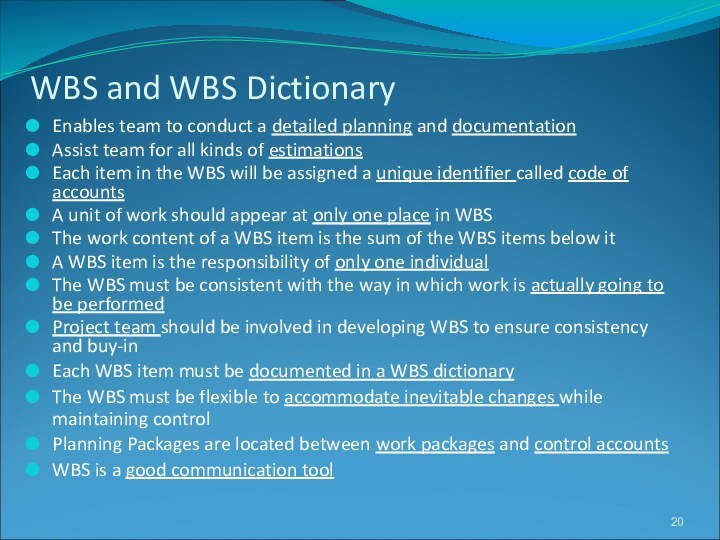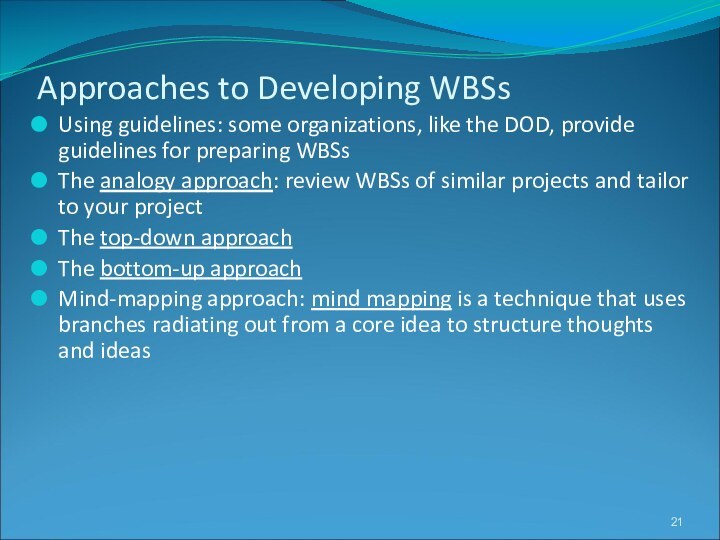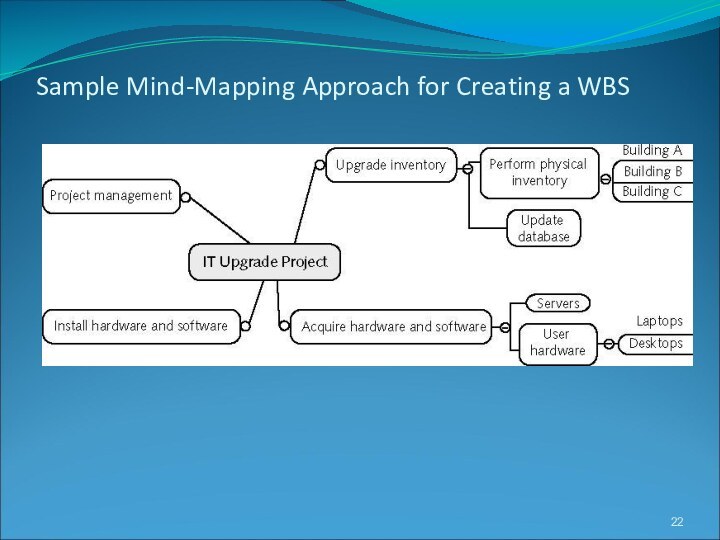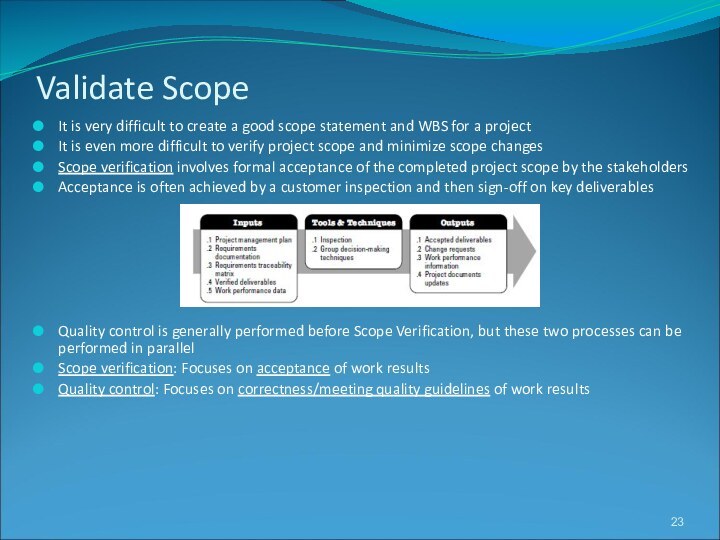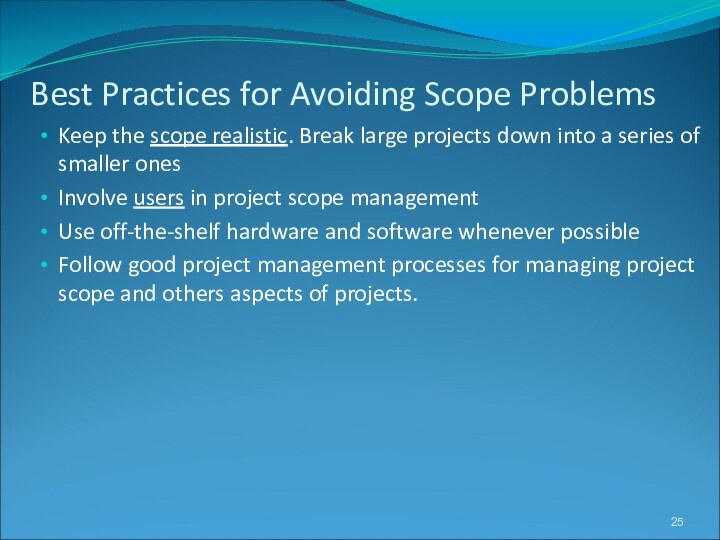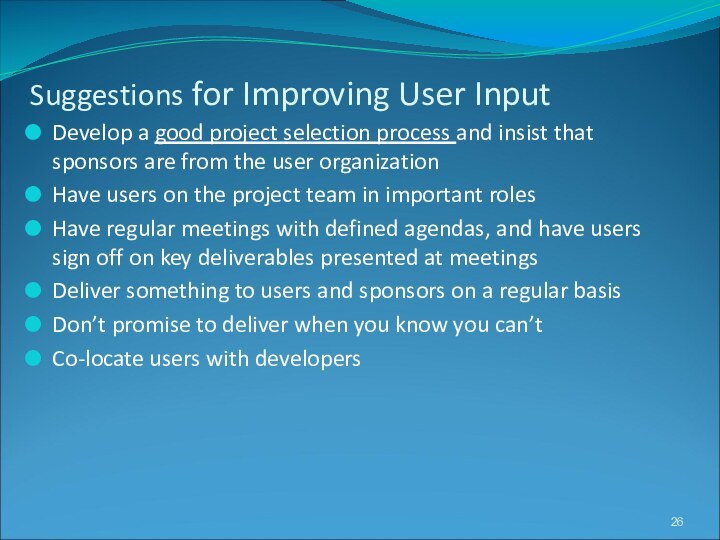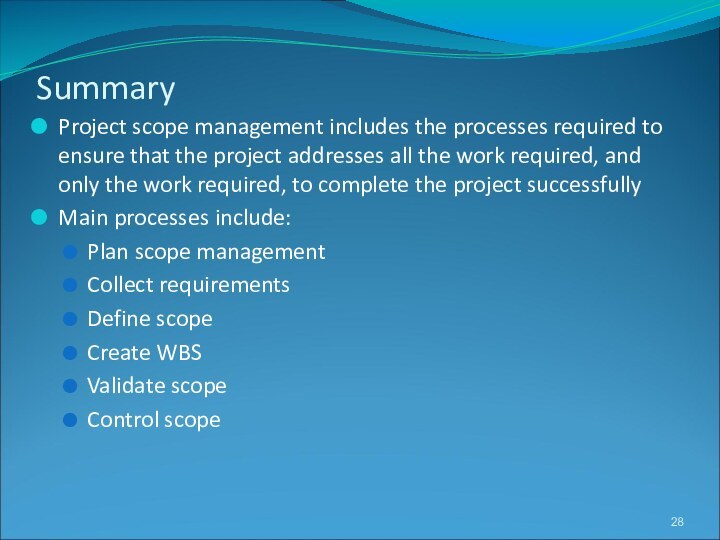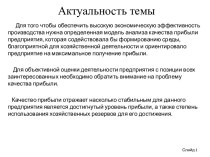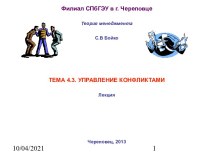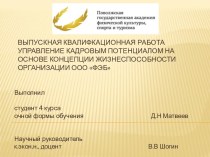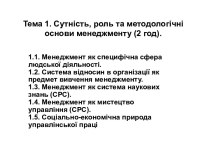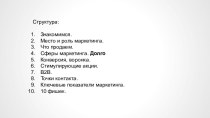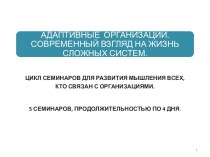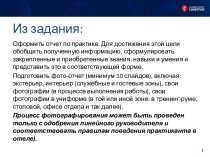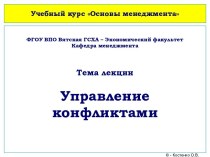Слайд 2
Learning Objectives
Understand the importance of good project scope
management
Discuss methods for collecting and documenting requirements
Explain the
scope definition process
Discuss the process for creating a work breakdown structure
Explain the importance of verifying and controlling scope
Слайд 3
What is Project Scope Management?
Scope: all the work
involved in creating the deliverables and processes used to
create them
Deliverable: A product produced as part of a project. E.g. hardware, software, planning documents, meeting minutes
Project scope management includes processes involved in defining and controlling what is or is not included in a project
Слайд 4
Project Scope Vs. Project Objectives
Project Scope refers to
the amount of the effort required to complete a
project
Project Objectives refers to a detailed description of the expected / desired outcome of the project
Example: Project Objectives could be to build a new website, Project Scope could be to build the website using ASP & .NET products and Flash media
Слайд 5
Project Scope Vs. Product Scope
Project Scope
The work
that must be done in order to deliver a
product or service with the specified features and functions. Completion of the project scope is measured against
The Project Management plan
Project scope statement, WBS and WBS dictionary
Product Scope
The features and functions that characterize a product/service/result. Completion of the product scope is measured against
Product Requirements
Слайд 6
Project Scope Management Processes
Plan Scope Management: process of
creating a scope management plan
Collect requirements: defining and documenting
the features and functions of the products to be produced and the processes used for creating them
Define scope: reviewing the project charter, requirements documents, and organizational process assets to create a scope statement
Create the WBS: subdividing the major project deliverables into smaller, more manageable components
Validate scope: formalizing acceptance of the project deliverables
Control scope: controlling changes to project scope throughout the life of the project
Слайд 7
Next Steps
Once the Project Charter and the Project
Scope Statement is released by the customer, only then
does the PM and the project team come into picture. The very next step is to create the Scope Management Plan
Слайд 9
Plan Scope Management
Primary purpose is to create Scope
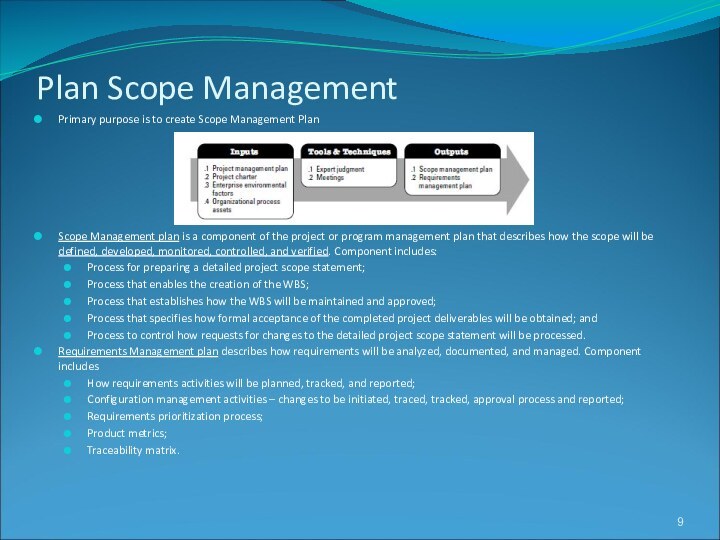
Management Plan
Scope Management plan is a component of the
project or program management plan that describes how the scope will be defined, developed, monitored, controlled, and verified. Component includes:
Process for preparing a detailed project scope statement;
Process that enables the creation of the WBS;
Process that establishes how the WBS will be maintained and approved;
Process that specifies how formal acceptance of the completed project deliverables will be obtained; and
Process to control how requests for changes to the detailed project scope statement will be processed.
Requirements Management plan describes how requirements will be analyzed, documented, and managed. Component includes
How requirements activities will be planned, tracked, and reported;
Configuration management activities – changes to be initiated, traced, tracked, approval process and reported;
Requirements prioritization process;
Product metrics;
Traceability matrix.
Слайд 10
Collect Requirements
A requirement is “a condition or capability
that must be met or possessed by a system,
product, service, result, or component to satisfy a contract, standard, specification, or other formal document” (PMBOK® Guide, 5th edition)
Collect requirements is the process of determining, documenting, and managing stakeholder needs and requirements to meet project objectives
For some IT projects, it is helpful to divide requirements development into categories called elicitation, analysis, specification, and validation
It is important to use an iterative approach to defining requirements since they are often unclear early in a project
Слайд 11
Collect Requirements Process
Requirements documentation describes how individual requirements
meet the business need for the product
Requirements documentation are
often generated by software and include text, images, diagrams, videos, and other media
They are broken down into different categories such as functional, service, performance, quality, etc.
A requirements traceability matrix (RTM) is a table that lists requirements, various attributes of each requirement, and the status of the requirements
Слайд 12
Sample Requirements Traceability Matrix
Слайд 13
Define Scope
Define Scope is the process of developing
a detailed description of the project and product
Describes what
is and not included in the project scope
Product analysis: includes techniques such as
Product breakdown,
Systems analysis,
Requirements analysis,
Systems engineering,
Value engineering, and
Value analysis
Слайд 14
Define Scope - Output
Project Scope Statement is the
description of the project scope, major deliverables, assumptions, and
constraints
Documents the entire scope, including project and product scope
Details the project’s deliverables and the work required to create those deliverables
Creates the common understanding of the project scope among project stakeholders
Includes:
Product scope description
Acceptance criteria
Deliverable
Project exclusion
Constraints
Assumptions
One of the three major project documents:
Project charter
Project scope statement
Project management plan
Слайд 15
Creating the Work Breakdown Structure (WBS)
A WBS is
a deliverable-oriented grouping of the work involved in a
project that defines the total scope of the project
WBS is a foundation document that provides the basis for planning and managing project schedules, costs, resources, and changes
Decomposition is subdividing project deliverables into smaller pieces
A work package is a task at the lowest level of the WBS
Scope baseline:
Approved Project Scope statement, WBS, and WBS dictionary together form the Scope Baseline
WBS Dictionary – detailed content of the components contained in WBS, Work packages and Control accounts
WBS – hierarchical decomposition of the total scope of work
Слайд 16
Sample Intranet WBS Organized by Product
Слайд 17
Sample Intranet WBS Organized by Phase
Слайд 18
Intranet WBS and Gantt Chart in Microsoft Project
Слайд 19
Intranet Gantt Chart Organized by Project Management Process
Groups
Слайд 20
WBS and WBS Dictionary
Enables team to conduct a
detailed planning and documentation
Assist team for all kinds of
estimations
Each item in the WBS will be assigned a unique identifier called code of accounts
A unit of work should appear at only one place in WBS
The work content of a WBS item is the sum of the WBS items below it
A WBS item is the responsibility of only one individual
The WBS must be consistent with the way in which work is actually going to be performed
Project team should be involved in developing WBS to ensure consistency and buy-in
Each WBS item must be documented in a WBS dictionary
The WBS must be flexible to accommodate inevitable changes while maintaining control
Planning Packages are located between work packages and control accounts
WBS is a good communication tool
Слайд 21
Approaches to Developing WBSs
Using guidelines: some organizations, like
the DOD, provide guidelines for preparing WBSs
The analogy approach:
review WBSs of similar projects and tailor to your project
The top-down approach
The bottom-up approach
Mind-mapping approach: mind mapping is a technique that uses branches radiating out from a core idea to structure thoughts and ideas
Слайд 22
Sample Mind-Mapping Approach for Creating a WBS
Слайд 23
Validate Scope
It is very difficult to create a
good scope statement and WBS for a project
It is
even more difficult to verify project scope and minimize scope changes
Scope verification involves formal acceptance of the completed project scope by the stakeholders
Acceptance is often achieved by a customer inspection and then sign-off on key deliverables
Quality control is generally performed before Scope Verification, but these two processes can be performed in parallel
Scope verification: Focuses on acceptance of work results
Quality control: Focuses on correctness/meeting quality guidelines of work results
Слайд 24
Control Scope
Scope control involves controlling changes to the
project scope
Goals of scope control are to:
Influence the factors
that cause scope changes
Assure changes are processed according to procedures developed as part of integrated change control
Manage changes when they occur
Variance is the difference between planned and actual performance
Слайд 25
Best Practices for Avoiding Scope Problems
Keep the scope
realistic. Break large projects down into a series of
smaller ones
Involve users in project scope management
Use off-the-shelf hardware and software whenever possible
Follow good project management processes for managing project scope and others aspects of projects.
Слайд 26
Suggestions for Improving User Input
Develop a good project
selection process and insist that sponsors are from the
user organization
Have users on the project team in important roles
Have regular meetings with defined agendas, and have users sign off on key deliverables presented at meetings
Deliver something to users and sponsors on a regular basis
Don’t promise to deliver when you know you can’t
Co-locate users with developers
Слайд 27
Suggestions for Reducing Incomplete and Changing Requirements
Develop and
follow a requirements management process
Use techniques such as prototyping,
use case modeling, and JAD to get more user involvement
Put requirements in writing and keep them current
Create a requirements management database for documenting and controlling requirements
Provide adequate testing and conduct testing throughout the project life cycle
Review changes from a systems perspective
Emphasize completion dates to help focus on what’s most important
Allocate resources specifically for handling change requests/enhancements
